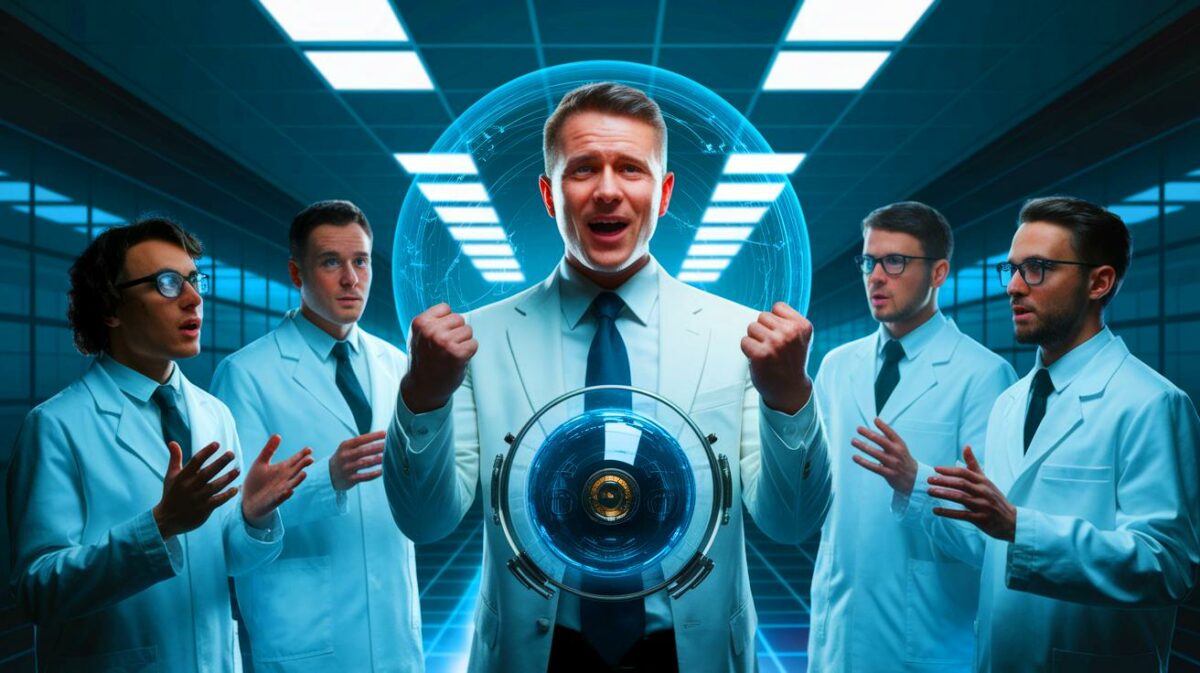| IN A NUTSHELL |
|
In an extraordinary breakthrough, a new propulsion technology has emerged that could potentially revolutionize space travel. This innovation, claimed to defy the established laws of physics, has left the scientific community in awe and skepticism. The invention suggests generating thrust without the need to expel propellant, challenging long-held principles in physics. While this development could pave the way for groundbreaking advancements in manned space exploration, it also raises significant questions and doubts among experts.
The History of the EmDrive and Lingering Skepticism
The concept of a propellantless engine isn’t entirely new. Back in 2001, British electrical engineer Roger Shawyer introduced the infamous “EmDrive,” often dubbed the “impossible engine.” This device claimed to produce thrust without any reaction mass, thereby defying the law of conservation of momentum. Despite the initial excitement, subsequent studies, particularly in 2021, concluded that the EmDrive held no scientific merit. Such precedents underscore the necessity for independent verification of extraordinary claims.
The skepticism surrounding propellantless engines persists due to the lack of empirical evidence supporting their feasibility. Scientists and engineers emphasize the importance of rigorous testing and validation to ensure that these claims stand up to scientific scrutiny. As history has shown, the allure of groundbreaking technology often collides with the harsh realities of physics, necessitating a cautious approach to revolutionary claims.
Charles Buhler’s Bold Gamble
More recently, Charles Buhler, an ex-NASA engineer and co-founder of Exodus Propulsion Technologies, unveiled an electrostatic engine based on what he calls the “New Force.” He asserts that this engine can overcome Earth’s gravity through an asymmetry in electrostatic pressure or a divergent electrostatic field. Although his research is not officially affiliated with NASA, his team includes experts from NASA, Blue Origin, and the Air Force, all aware of the environmental impacts of space technologies. This group has been working for decades on propellantless engines.
Buhler’s claims have sparked interest and debate within the scientific community. His team’s interdisciplinary expertise lends credibility to the endeavor, yet the lack of formal NASA backing highlights the speculative nature of the project. If successful, Buhler’s innovation could lead to more sustainable and efficient space travel, reducing the reliance on traditional chemical propulsion systems and minimizing environmental impact.
Scientific Presentation and Implications
The discovery was showcased at the Alternative Propulsion Energy Conference (APEC), a gathering of engineers and enthusiasts eager to push the boundaries of gravity and physics. According to Buhler, this technology allows electric fields alone to generate continuous force on an object without expelling matter. He hopes that companies will seek licenses to employ this innovative technique.
In 2023, after extensive research, the engine successfully produced sufficient thrust to counteract Earth’s gravity. Tests conducted from early 2022 until November 2023 confirmed this milestone achievement. It’s important to note that current prototypes weigh between 1.06 and 1.41 ounces, underscoring the potential for scalable applications. This advancement could redefine the future of space travel, offering new avenues for exploration and commercialization.
Towards Scientific Validation?
While initial results are promising, rigorous scientific verification is now imperative. The history of propellantless engines is replete with examples where seemingly promising results proved disappointing following meticulous testing, as was the case with the EmDrive.
Buhler himself acknowledges, “Nature has its own ways of doing things, and it’s our job to discover what it does.” He also hopes that these devices can be tested in space to explore their full potential. If this technology is validated through research, it could unlock new possibilities for commercial space exploration. However, each step must be closely examined to ensure a comprehensive understanding before considering widespread application.
As we stand on the brink of a potential paradigm shift in space propulsion, the world watches with bated breath. Could Charles Buhler’s groundbreaking invention truly alter the landscape of space exploration, or will rigorous scientific scrutiny reveal its limitations? Only time and thorough investigation will tell. What impact could such a technological breakthrough have on the future of space travel and our understanding of the universe?
Did you like it? 4.4/5 (23)








Wow, if this is real, we’re living in a sci-fi movie! 🚀
Can this technology be adapted for everyday use, like in cars or planes?
Was Elon Musk involved in any way? 😂
Is the scientific community taking this seriously or is it just hype?
Sounds like the EmDrive all over again. I’ll believe it when I see solid proof.
What are the environmental impacts of this new technology?
At last, a way to beat those annoying laws of gravity! 😄
If this works it would revolutionize EVERYTHING.
Charles Buhler and his team deserve a Nobel Prize if this is true!
How long before we see this tech being used commercially?
What are the potential risks associated with this invention?
Gravity? Never heard of her. 😏
Thank you for keeping us informed about these incredible developments!
This better not be another elaborate hoax. 😒
Does this mean we can finally have flying cars? 🚗✈️
How can I get involved in testing or supporting this technology?
Hope science doesn’t dismiss this too quickly. We need to explore all possibilities.
Any connection to the theories proposed by Nikola Tesla?
This could change everything! Thanks for sharing this amazing news. 🙌
I’m intrigued! How soon can this technology be scaled up?
Are there any reputable scientists backing this claim?
I’m just waiting for the “April Fools” announcement at this point. 🤔
Does the invention have any applications for renewable energy?
How does this impact our current understanding of physics?
What does NASA think about this? Are they on board?
Are there any videos of the live demo available?
Thank you aliens!